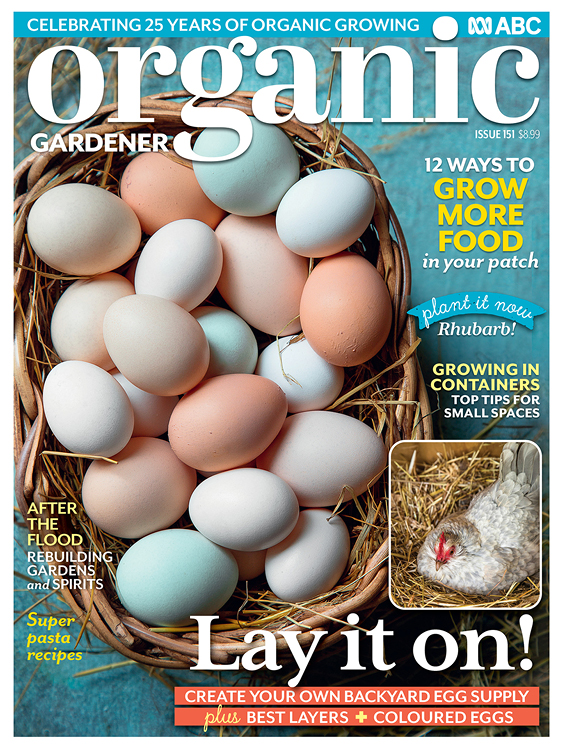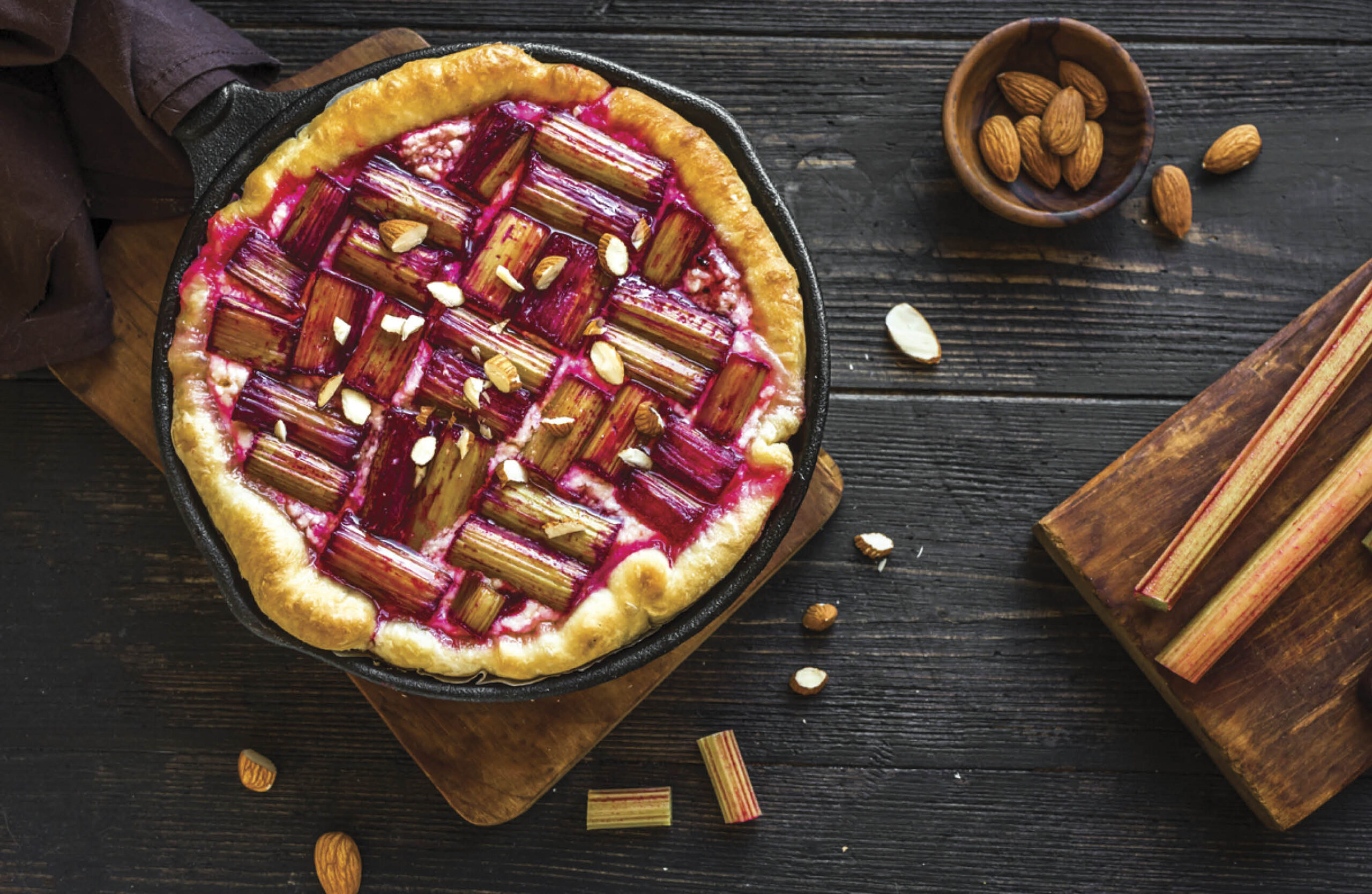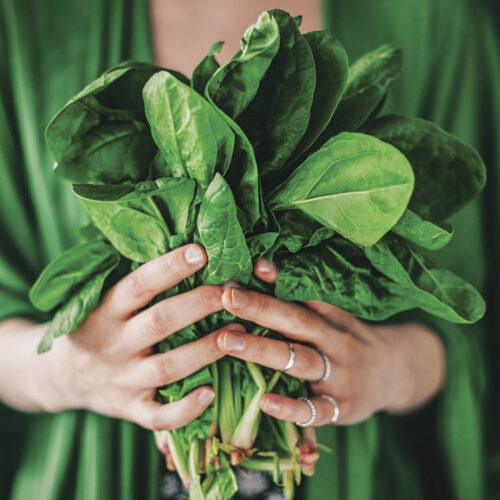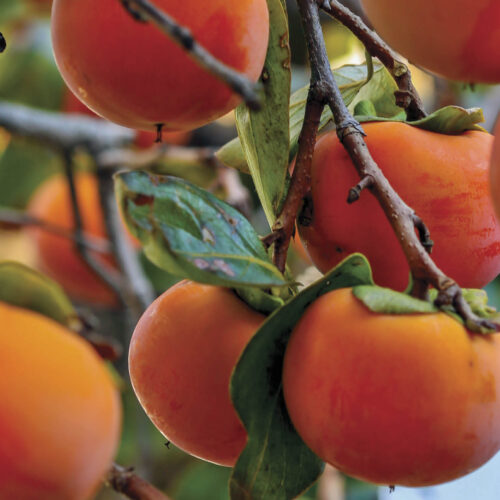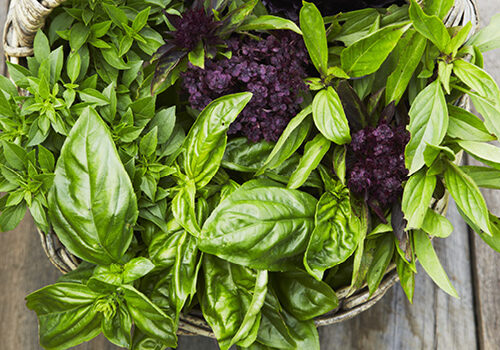How to grow rhubarb
2024-08-13T14:39:40+10:00
Add rhubarb to your garden: it takes little care and tastes delicious (especially in sweet treats)!
You can easily grow rhubarb with minimal care, and it will keep producing harvests for many years. These tips will help you grow your own.
Getting rhubarb started in your garden
Start rhubarb from seeds or bare-root crown divisions. To grow from seed, soak in warm water or diluted seaweed solution overnight before sowing in spring, when temperatures are 20–23°C. Seeds germinate in 7–14 days.
Pot seedlings up to grow into small plants before planting out. Although cost effective, seed-grown rhubarb does not grow true to type, and takes 2–3 years from planting to first harvest.
Growing rhubarb
Plant crowns or small plants into slightly acidic, well-drained soil enriched with well-rotted compost and manure. I plant rhubarb with new buds of the crown slightly above soil level, to help prevent rot. Plants like full sun in cold climates, can grow in light shade and prefer afternoon shade in hot climates.
In spring, feed plants every fortnight with diluted liquid seaweed to encourage new growth. Water regularly and deeply in dry weather. Fertilise plants by ‘side dressing’ in autumn for winter-producing varieties or early spring for those mainly harvested in summer. Remove flowering stems in spring, as they will take energy from the plant and reduce your harvest.
What to do with rhubarb
Eat only the stalks, as the leaves are poisonous. Harvest individual stalks by pulling off at the base. Never cut stalks higher up, as remaining sections can rot into the plant. Harvest outer stalks first, especially those lying on the ground. Leave 4–5 leaves to keep plant growing well.
You can eat the stalks raw, but they can be cooked or made into cakes, muffins, pies, or desserts. You can slow-bake chopped rhubarb in the oven or simmer in a minimum of water, with or without sweeteners, depending on the sweetness of your variety.
I cook rhubarb in apple juice, or with apples or strawberries, for natural sweetening and extra flavour. Rhubarb pairs with star anise, cinnamon stick, vanilla pod or try native cinnamon myrtle (Backhousia myrtifolia) leaves, or native thyme (Prostanthera rotundifolia) leaves. Rhubarb makes delicious cordial and wine. My Swiss relatives make a divine rhubarb tart called Dune in which shortcrust pastry is layered with fresh rhubarb slices and then covered in a sweet egg custard topping and baked.
HEALTH WARNING: For those with kidney problems, gout or rheumatoid arthritis, check with your doctor if rhubarb’s high levels of oxalic acid are a problem for you.
Karen Sutherland’s full article appears in our Early Spring 2024 issue (OG 151). You can subscribe to the magazine here for a supply of practical solutions for a greener life.
